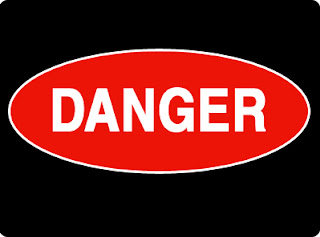The most dangerous Internet worms
Hi all. For those who constantly surf the Internet we know we are exposed to many risks that are difficult to combat, and each day we will highlight a little known worms that travel through the network infecting computers and making life a little more difficult than it already is.Picking up some history we can highlight the first worm of Internet who became famous as Morris (by the name of its creator, Robert Tappan Morris) was born on November 2, 1988. His power was so harmful, that had the capacity to slow the computers to the point of leaving them unusable. Now after over 20 years of existence today worms are a family of malware that are transmitted with greater force on the Internet.
Based on this, Microsoft shared a list of the most dangerous worms currently circulating in the network and that can give headaches to more than one:
Conficker: One of the threats, according to some security firms, will talk about with greater intensity in the coming months. This worm devours users' personal information, seeks to attack those most vulnerable in security on the Web and key delivery of emails to his accomplices phishers.
Taterf: The main characteristics of this worm highlights its ability to harassment of users, especially when conducting electronic transactions. It also has the power to intercept passwords easy deduction.
For example, when a user uses his computer to access the Internet and perform banking transactions, then the software captures and sends information to the offender without the victim noticing. Daniel Castellanos, Vice Asobancaria economic, explained that "it is important for customers to conduct their financial transactions from computers that have updated protection measures such as antivirus, antispyware, personal firewall and security patches to avoid the risk of malicious software installation ending capturing their usernames and passwords. "
Frethog: Found in the category of password interception programs and monitoring tools. Also stalker users performing electronic transactions and, as Taterf, captures passwords considered easy deduction.
Reindeer: It's in the category of Trojan downloaders and installers of malware. Of its features include using a form of Chilean Network package, deceiving users with pictures of camouflage as security software.
Rimecud: A worm that threatens to users who enter without security to the bank accounts from an Internet cafe or public computer, and seeks to gain control of computers. Also, install new malware designed to send spam and continue the infection cycle.
Autorun: Take advantage of users sharing private information on websites that do not have good security. It is able to lock keyboards and screens. It is also considered one of the worms that produce more losses for the financial sector.
Hotbar: Your main weapon is seduction act to users in the emails. It has the ability to threaten those who do not download security updates, and attacks while 'puppet head' through malicious websites.
FakeSpyro: One type of worm that have gained more ground is that of the 'rogues' or fake security solutions. FakeSpyro is one of the most dangerous and continues the tradition of his class to simulate a virus that is able to clean all malware from a computer. After-installed voluntarily by the victim, he believes will better protect your computer, captures personal information and passwords.
Alureon: This Trojan has rootkit features (able to hide himself and other malware tools and even legitimate directories and user passwords to control the computer remotely).
Zwangi: It is considered, despite its short life of crime, one of the most highly dangerous worms. Mislead users, usurping identities and attacks quietly. This worm redirects URL typed in the address bar of your web browser to www.zwangi.com, which supposedly is a search engine. It also takes screenshots without permission.
Some recommendations for preventing and combating worms:
As far as possible not to use unauthorized software security and recognition, as this has become one of the most common methods of attackers to defraud their victims. Also known as 'rogue' or 'scareware' and is software that appears to be beneficial from a security standpoint, but actually generates erroneous or misleading alerts, and by winning the confidence of victims, you can easily damage .
Maintain updated anti-malware defenses (antivirus, antispyware, firewall, etc..) And keep informed about the latest developments in preparation techniques of malware, including social engineering.
Attackers use Web sites to conduct attacks using phishing (phishing) or to distribute malware. Malicious web sites generally seem completely legitimate and show no outward indications of his nature, even for users with some experience.
Do not enter the page of the banks through links or emails , and preferably always typing the web address.
Keeping your computer security mechanisms such as antivirus, antispyware, personal firewall and security patches according to your operating system.
Even that above all remember to be cautious when surfing the net, do not trust the world or web applications or unknown or suspicious, and especially seek to be well informed of all news and updates on the Internet.
Info by Rakhesh...
Tags:dangerous internet warms list,most dangerous PC worm,most dangerous computer worm,powerful PC worm,Danger PC worm list,Trickslove worm list,Most dangerous PC worm in history,Dangerous PC worm list,PC worms ifections history,PC worms total list,internet worms,Trickslove internet tricks

No comments:
Post a Comment